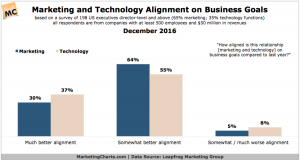
The rise of social media has piqued the interests of countless marketers.
The sheer amount of businesses that have jumped on the social media hype train in the past couple of years is overwhelming, making the competition even more terrifying.
But if a company stays in their comfort zone by not migrating their marketing to social media, the chances of them surviving the competition is virtually nonexistent.
Social media is (for lacking of a better word) a disease, but it’ll be an epidemic before you realize it. And even more so for generation Y and Z.
A whopping 90% of young adults —ages 18 to 29— use social media (compared to just 35% of those over age 65).
But the fact that everyone is on social media is a two-bladed sword. On the one hand, marketers don’t have to worry about where to look for leads. On the other hand, there are too many people to choose from.
According to The Next Web, 43% of digital marketers say social media is one of their most effective tactics, but 49% also call it one of the most difficult.
It’s pretty challenging.
Video content, however, begs to differ. Even on a crowded social media platform like Facebook, video content shines brighter than ever.
It’s been said that Facebook is going to be the #1 place for short videos and other formats.
Feeling overwhelmed yet? Well, don’t. I’m here to guide you through the details of video marketing via social media.
Twitter Video Marketing

Apply the principle of SEO on Twitter
Twitter’s algorithm for determining which video to show users is outstanding. Instead of pulling the most popular video content, Twitter searches for (often) live events, a recent string of events, or recently recorded events.
Note that Google (who owns ⅔ of the search market) crawls not only for video but also for your tweet. So if you post a video along with a tweet, you double your chance of being discovered through organic search.
Think of it as TV SEO (Twitter Video Search Engine Optimization).
Apply the principle of SEO on Twitter
Brevity is key
Twitter is about micro-blogging: getting your message out quickly and limiting you to short posts. Because brevity is key, you have to get the most out of that short duration by making the information as condensed as possible.
Good video content on Twitter is compact in length and file size, but it needs to stand as a quality piece in and of itself.
Keep yourself updated
Twitter is a social media platform that changes depending on how its users feel about their current meta.
Although the changes made to Twitter are unlikely to have a major impact on Twitter video marketing in general, checking out the updates is definitely worth your time.
Small changes such as UI optimization, updates on the in-app features, bug fixes etc. are full of potential for exploitation.
For example, last month’s Twitter night mode update (which changes the entire Twitter UI to dark blue) had quite an impact on the viewing experience for videos with high exposure.
The love-hate relationship between marketers and the autoplay feature on Twitter (not exclusively) is also worth mentioning.
The quarrel between how much autoplay improves metrics, such as view counts and engagement rate, and how badly it reduces the user experience quality has been fiery since day one.
Facebook Video Marketing

Facebook has been the most popular social media platform for the last 5 years or so. Everyone you know in real life is probably on Facebook — from your 9-year-old nephew to your 55-year-old uncle who you haven’t spoken to in months.
That’s why video marketing on Facebook exposes your brand to an extremely vast range of audience.
The question is: How can you pick the audience you want from those billions of users? The answer: You don’t pick.
Target your video
When it comes to social media, you don’t pick who is going to watch your video. Video content is like a magnet: You use it to attract metals, but you don’t get to pick which metals are going to stick.
Sure, there will be some grains of black sand (which is actually meteorite powder) that unintentionally stick to your magnet, but they aren’t a cause for concern. Your video content attracts your audience since you’re delivering it in the right place.
Different video for different purpose
Social media and video marketing experts recommend producing different videos that have distinct purposes.
If you want your audience to sign up for your newsletter at the end of the video, then create a video with that goal in mind.
If you want to promote a new service, then focus on that service in another video. You can easily direct viewers to an action by using a focused video.
A single video that tries to tackle multiple purposes feels unfocused and isn’t as convincing. This rule also applies to social media platforms: A single video for multiple platforms isn’t going to get you far.
Pin key video content
Facebook allows you to pin your video content at the top of your business page to keep it from being pushed down as you publish new content.
“But what if I publish a new video on Facebook every week?”
It doesn’t matter how many videos you have for your campaign on Facebook as long as you have one key video that covers the key features that your business offers, like an explainer video for your product.
That one video gets to stay on top of your Facebook page as the pinned content.
If you happen to change your product demo/explainer/promo video, don’t forget to “promote” the new video to your pinned content.

Instagram and other visual content sharing sites are probably alike in their essence, but each one has their own culture that isn’t comparable to another.
Instagram, for example, is a social media platform where brands show who they really are; it’s all about shaping a brand’s personality.
The fundamental purpose of Instagram is to encourage users to share their own images and videos with others. It means that Instagram users need to be productive.
There’s a major difference between Instagram and Pinterest. On Pinterest, a user can have a thriving account without ever posting a piece of content themselves.
To put it into perspective: Pinterest is where you’d post Aunt Molly’s recipe for the perfect cheesecake, while Instagram is where you’d post a vintage photograph of said cheesecake along with a pen, an old camera, and a textbook around it (all of which seemingly serve no purpose other than aesthetics).
Now let’s jump to the “how” part of Instagram video marketing.
Post Videos that are visually qualified
On Facebook and Twitter, you might overlook aesthetic details such as visuals, color, lightings and filters because they’re not that big of a deal as long as the content in the video itself is worth watching.
Don’t get me wrong. It’s just as important to think about the content of your videos since Instagram has caught on as a way for friends to share videos with each other.
But Instagram values these details differently from other social media platforms.
The culture in the Instagram universe is that there’s a personality behind the camera. Therefore, taking the time to choose the right angle, set the lighting, and arrange in-frame objects are important details to focus on.
Don’t post commercial content
Tutorials, explainers, and product demos are probably best delivered on YouTube (or Vimeo, Wistia, or other hosting sites depending on your liking).
Commercials might not be the proper fit for Instagram’s arty vibe. What seems to work best is a video designed to simply delight whoever watches it.
Oreo seems to get it right with their Instagram page.
Paranormal snacktivity – not for the faint of heart. #OreoPlated by @oreo
Creative and delightful content like Oreo’s is likely to attract more audience. But that’s not the only purpose.
If you can get your viewers to like what they see, it means you’ve just given them a reason to click that follow button, which equals retention.
I mean, tourists are fine, but what you really want is for people to become part of your digital community. So give people a reason to click the “follow” button.
Give them more reason to engage with your brand
One way to get people on Instagram to engage with your brand (while actually promoting it) is by doing giveaways.
The company Fifth Watches is a clever one in the Instagram marketing competition.
They launch exclusive timepieces on the 5th of every month. Of course, they want to promote these new items hoping that people will buy them. So they arrange all variations of their new lineup, take a nice shot of them, and upload it to Instagram and do a giveaway.
But get this: In order to be eligible for a cute watch you have to like the post, leave a comment and tag a friend.
Naturally, the tagged friend would also love to have a free exclusive watch, so they tag another friend and the chain goes on and on until someone decides to not want an exclusive watch.

Takeaways
If there are any overlaps between what these social media platforms are good for, it’s that all three of them serve as branding and customer retention platforms despite how differently users see each of them.
But to take a look at each of them more closely, here’s what each of them is best for:
- Facebook overloads you with all kinds of people. You have to specifically craft your video content for your target audience to get the most out of your investment.
- Twitter is best for real-time and recent events. Use this channel to post short updates that can benefit both you and your audience.
- Instagram is where your company should channel its love for arts and craftiness. Minimize commercialization in this channel.
What are your plans for social video marketing? Let us know in the comments below!
Digital & Social Articles on Business 2 Community(70)
Report Post

